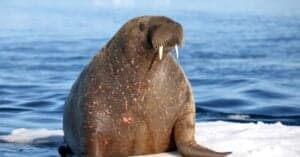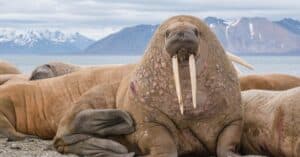Walruses are very distinct-looking animals that reside mostly in the cold and icy waters of the Arctic Circle. Not the most popular animals in the world, very little is publicly known about them. Therefore, we have gathered 10 facts about walruses that will fascinate you.
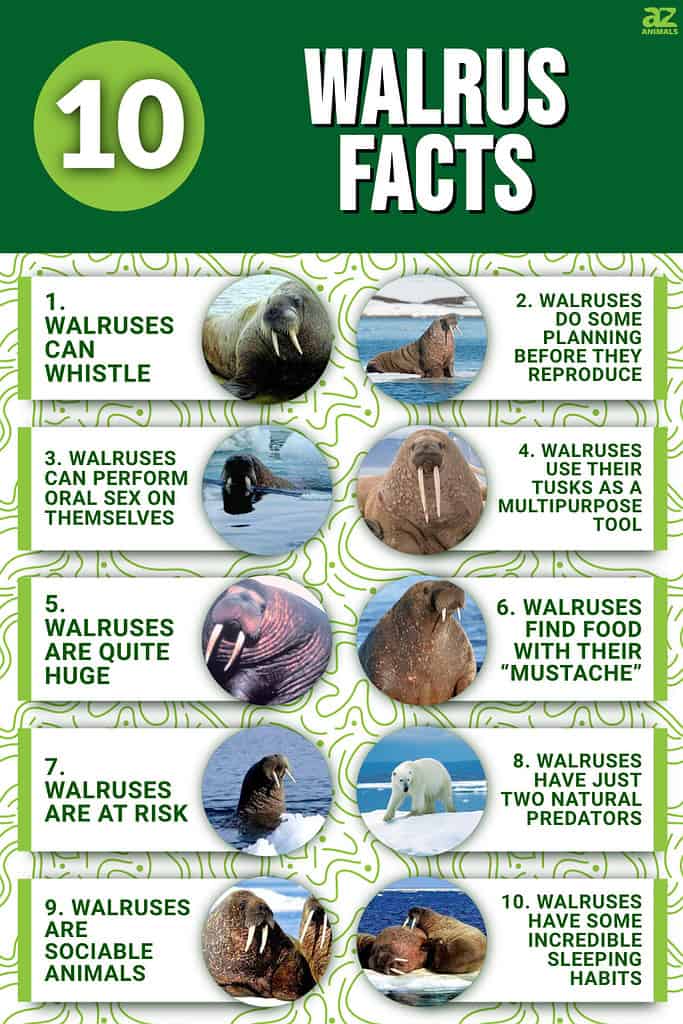
1. Walruses can whistle
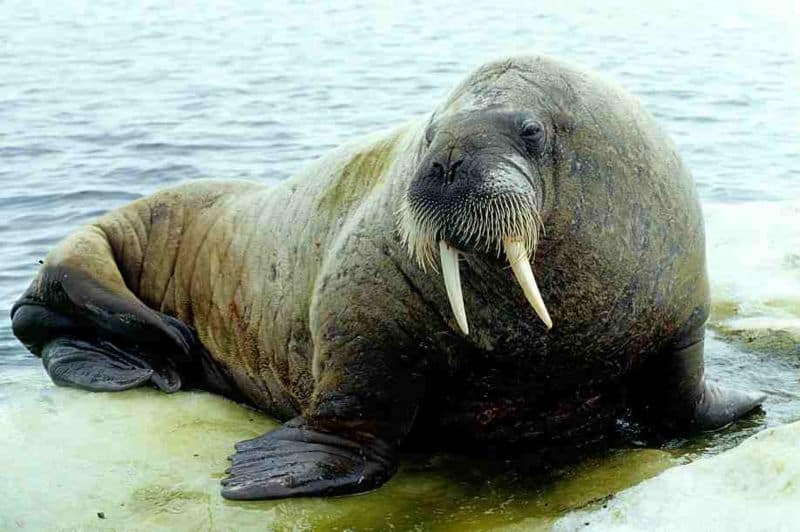
One of the more interesting sounds a walrus makes is a whistle.
Walruses can produce a wide range of sounds, but perhaps the most interesting one is that they have the ability to whistle. Other sounds that you may expect from a walrus include growls, grunts, and clicks.
2. Walruses do some planning before they reproduce
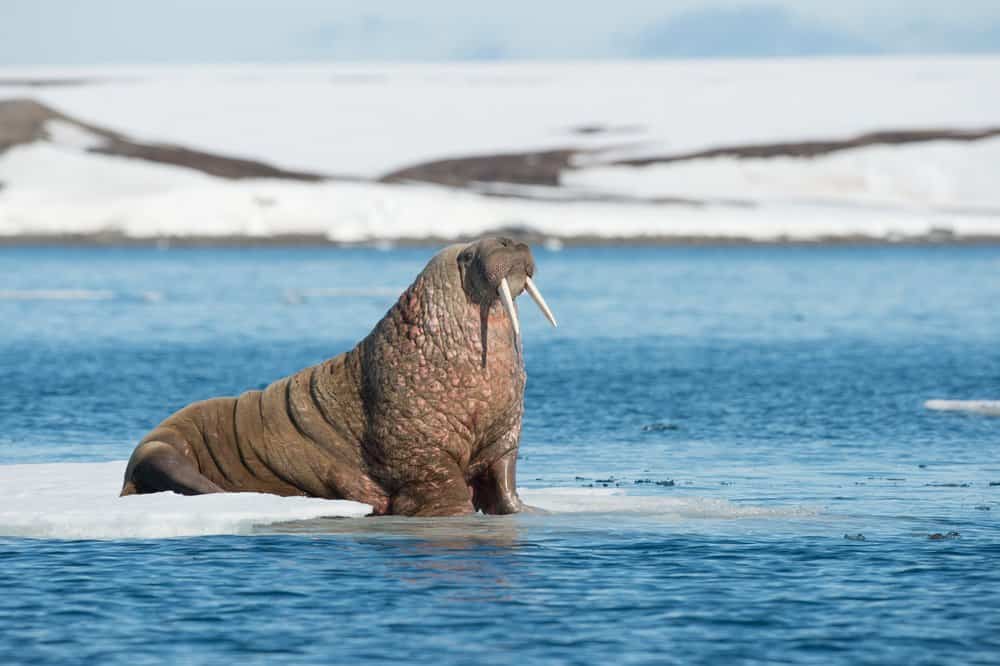
Female walruses strategize before deciding to have young ones in the Arctic.
©Inge Jansen/Shutterstock.com
Female walruses strategize before deciding to have young ones in the Arctic. Raising a young requires a great deal of energy and resources, therefore female walruses delay implantation until they are sure that they have all the resources and energy they will need to raise their young. Delayed implantation means that the females do not immediately plant fertilized eggs in their uterine wall.
At birth, a calf usually weighs about 130 pounds, and it is usually about four feet long. Proving that there is careful planning involved in their reproduction, female walruses only give birth to a calf once in three years, and they keep this young one close to them for up to three years.
3. Walruses can perform oral sex on themselves
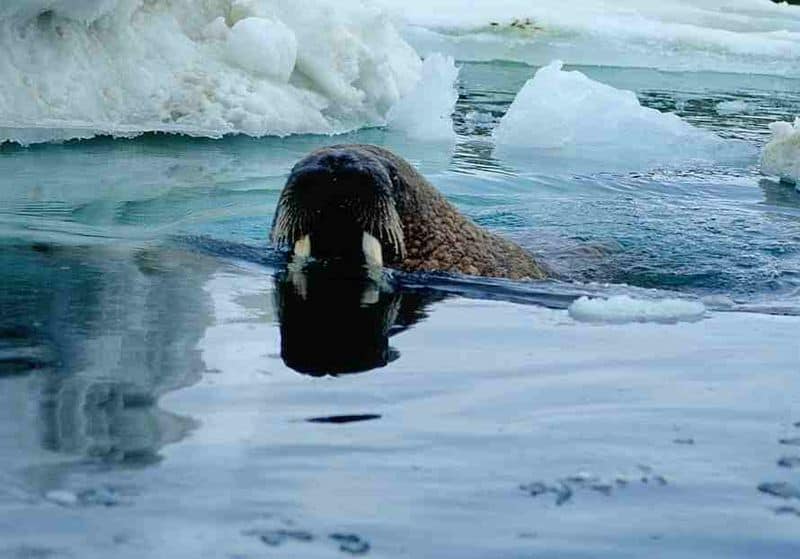
Walruses are one animal species that are capable of self-stimulation.
Human beings are not the only animals that masturbate, some animals are able to do so as well. Walruses fall in that category, and they may take it a notch higher, with male walruses’ ability to perform oral sex on themselves. One of them was spotted doing the very act in an aquarium, and it sure occasioned a lot of reactions from those watching. Other animals that engage in self-stimulation include dogs, horses, moose, porcupines, elephants, etc.
4. Walruses use their tusks as a multipurpose tool
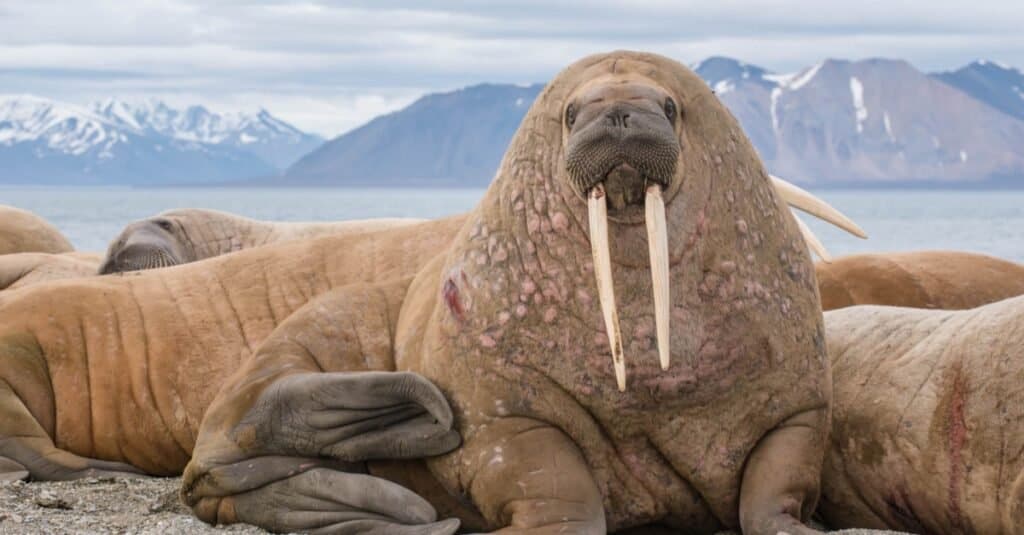
The tusks of the walrus serve several purposes for both the males and females.
©Mikhail Cheremkin/Shutterstock.com
The tusks of the walrus serve several purposes for both the males and females (yes, both of them have tusks). Two of the more prominent uses are to defend themselves from predators and to establish dominance and hierarchy. Additionally, their tusks can be used to make large breathing holes in ice and to remove chunks of ice that they rest upon in order to access mollusks under the ice.
5. Walruses are quite huge
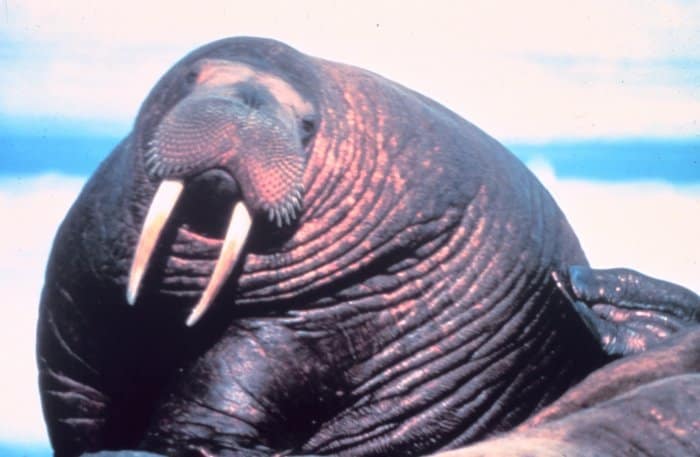
A walrus can weigh an average of 880-3000 lbs, with the heaviest breaking the scale at 4000 lbs!
©Office of NOAA Corps Operations, Public domain, via Wikimedia Commons – License
If you did a Google search with the search term “giants of the Arctic,” you will most definitely see walruses in the search results. When you consider the size of walruses, you realize that they have earned the name. An average walrus is between 7.5 ft-11.5 ft in length and weighs between 880-3000 pounds. The largest ones can be as long as 12 feet and weigh about 4000 pounds.
6. Walruses find food with their “mustache”
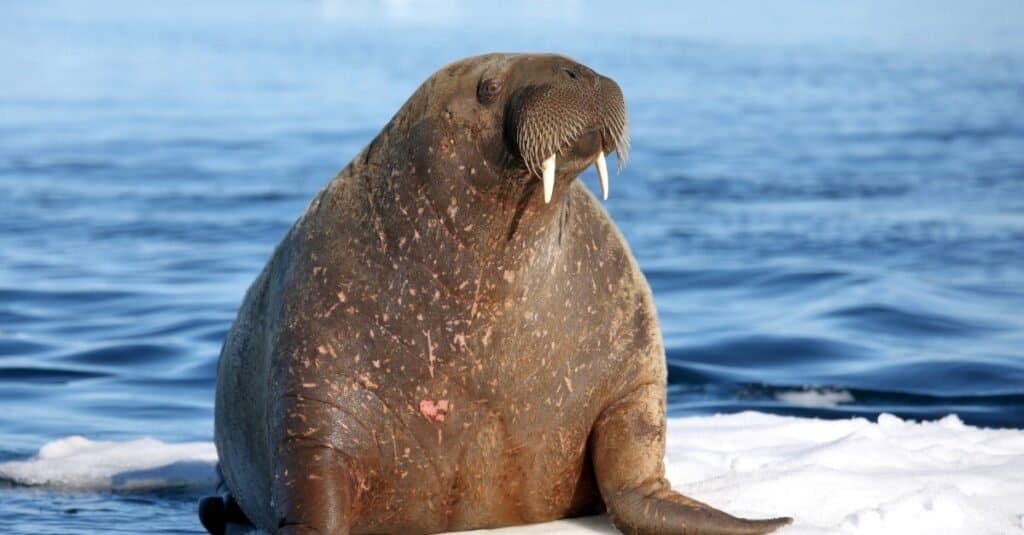
The walrus’s sensitive whiskers help it find prey.
©iStock.com/zanskar
If you spot the walrus, you may be tempted to think that it has a mustache, but be assured that what you may consider a mustache is not hair but incredibly sensitive whiskers that it uses to find prey. Walruses have about 13 to 15 rows of these tactile organs around their nose, and it helps them find about 50 pounds of food on a daily basis. These whiskers function much like they do with rats, cats, otters, and other whiskered animals.
Whiskers are very important for walruses who don’t have great vision and will need to find food in the darker regions of the ocean.
7. Walruses are at risk
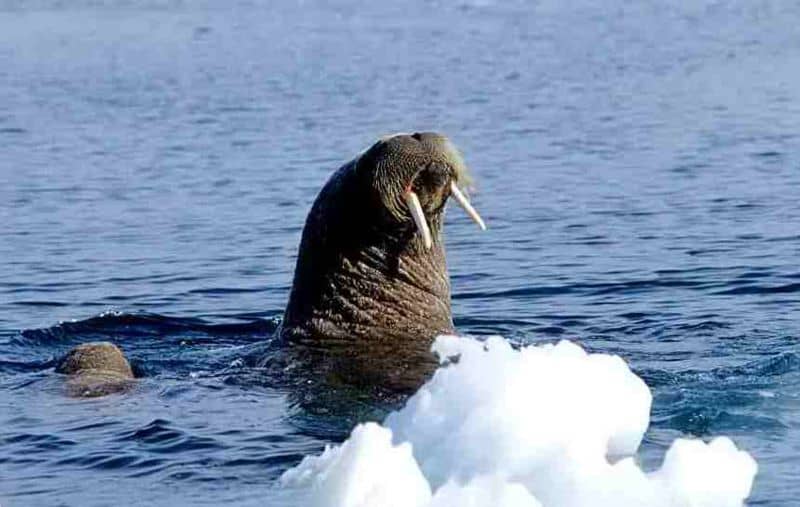
Walruses are at risk due to global warming and increased industrial activity but not limited to the two.
Thanks to global warming and hunting, these unique creatures were listed as vulnerable by the International Union for the Conservation of Nature in 2016. As a result of global warming, depleted ice makes it such that Pacific walruses are forced to gather in greater numbers on land, and to travel greater distances to find food, causing the species to be at greater risk. Walruses are also at greater risk due to increased industrial activity, which results in oil spills.
When it comes to hunting, harvesting walruses has had a major impact on the population of the species for the longest time. Thankfully, hunting walruses are now regulated by governments that have them in their territory.
8. Walruses have just two natural predators
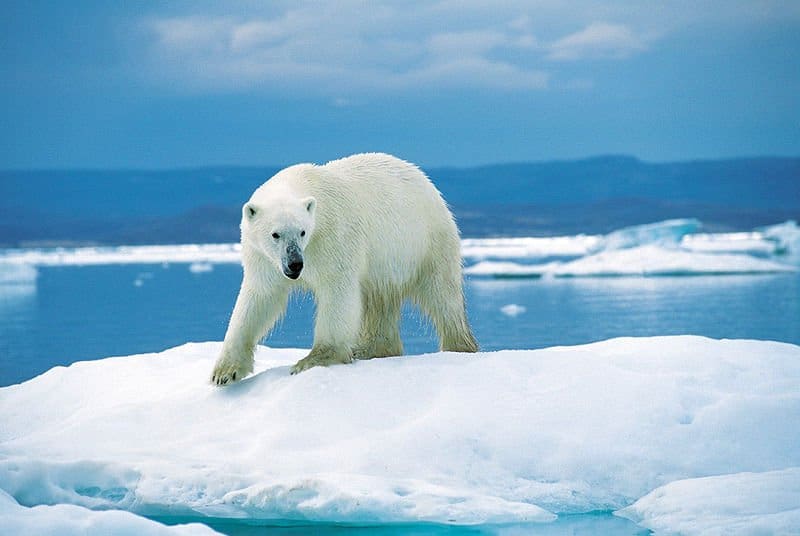
The polar bear has been known to prey on walrus calves.
Apart from human beings, walruses have just two other animals that attack them for food, namely, the orca and the polar bear. However, the polar bear and the orca are more likely to attack calves and impaired walruses rather than adult ones.
When hunting walruses, polar bears rush beach groups and consume the younger or infirm animals who were crushed or hurt during the sudden movement that occurs. However, generally, polar bears avoid direct confrontations with walruses because walruses prove to be very formidable opponents, especially if the polar bear follows them into the water. Often, the bear-walrus encounters are long and exhausting.
As for orcas, they frequently attack walruses, but the walruses have survived by counterattacking them. Nevertheless, orcas have attacked walruses successfully with very few or no injuries.
9. Walruses are sociable animals
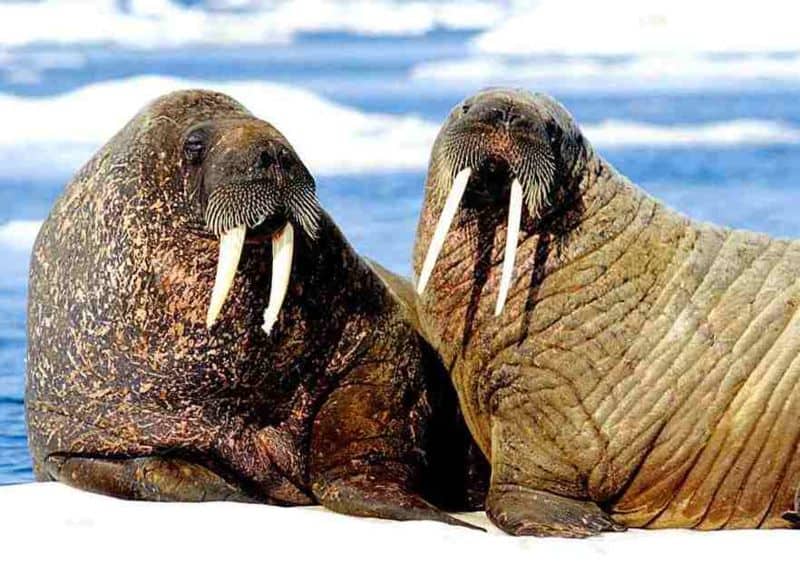
Walruses move around in groups called herds.
©Ansgar Walk / CC BY-SA 3.0 – License
Walruses are not loners. They move around in groups called herds. Herds usually involve hundreds of them coming together to sunbathe, and this number could rise to thousands during mating season. Herds are segregated by gender, with the females in their groups and the males in theirs.
These animals are always in contact with each other all year long, and their congregation is always full of noise.
10. Walruses have some incredible sleeping habits
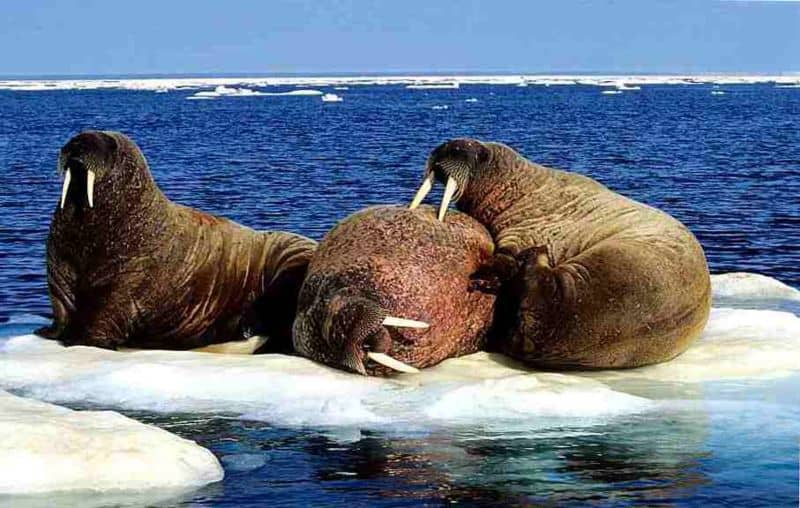
A walrus can sleep on land or in water. In water, it takes a quick 5-minute power nap, but can stay in Dreamland for up to 19 hours on land.
©Ansgar Walk / CC BY-SA 3.0 – License
Walruses have the capacity to sleep both in the ocean and on land. In water, they usually will not sleep longer than 4-5 minutes and will either sleep at the bottom, float on the surface, or lean against something in an upright position. On land, walruses have long and deep sleep that could last about 19 hours.
Another interesting fact about these animals is that they can stay awake for as much as 84 hours (more than 3 days) with no observable need for sleep. Scientists say it is unprecedented to find that walruses can remain active for periods lasting up to 84 hours without showing any signs of sleep. This is because every other animal is involved in some form of sleep every day.
The photo featured at the top of this post is © Mikhail Cheremkin/Shutterstock.com
Thank you for reading! Have some feedback for us? Contact the AZ Animals editorial team.



